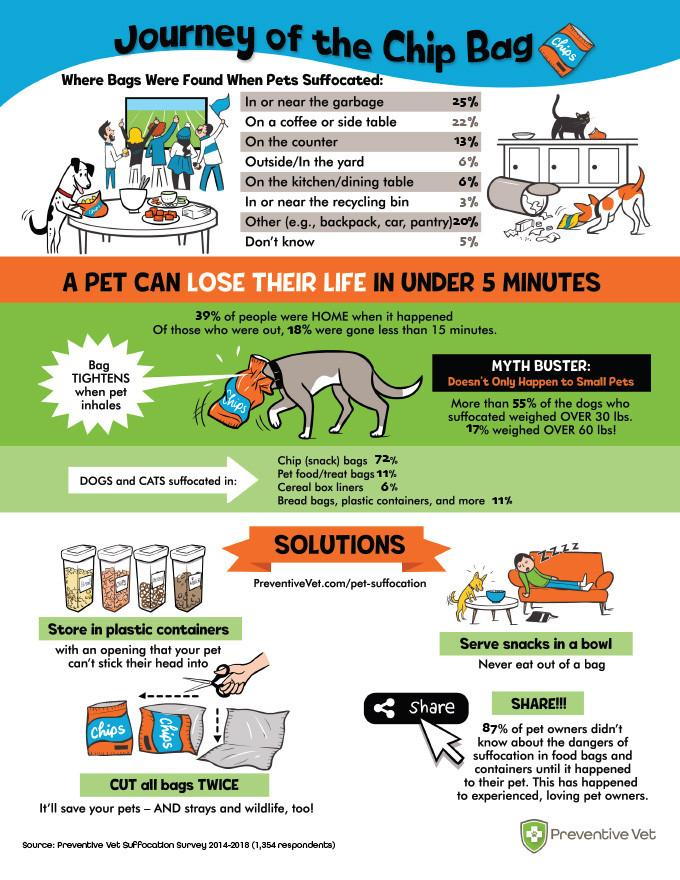Recently, one of our patients passed away after accidentally suffocating in a treat bag. His family requested we share information on this tragic, but preventable, incident to hopefully save other pets and owners from this happening to them.
We are trained to cut up six-pack rings to prevent wildlife from getting their heads stuck, but the dangers of suffocation in bags/containers are not as widely-known and not talked about nearly as often, despite occurring quite regularly. When pets put their heads in a bag or container, it tightens when the pet inhales. It only takes 3-5 minutes for a dog or cat to suffocate when their air supply is cut off!
Statistics show that at least 2-3 pets suffocate in snack or other plastic bags each week in just the United States. Many of these pets were at home alone for a very short period of time, while nearly half of the pet owners were actually home in another room when it happened. The most common culprits are plastic or mylar-type bags that contain or have contained snack foods or treats. This can include chip bags, cookie bags, jerky bags, cereal bags, Ziploc bags, dog/cat food bags, and dog/cat treat bags. Pets have also suffocated in chip tubes and other containers with small openings.
Pets have reportedly found the bags/containers in various locations including inside garbage cans, on counters or tables, in recycling bins, and outside in the yard. It is recommended that all bags large enough for your pet’s head to fit in be cut up or tied in a knot before disposal. Both human and pet snacks, treats, and foods, should be placed in containers that have an opening too small for your cat or dog’s head to fit in. Also, it is best to serve snacks in bowls rather than leaving open bags out, especially during parties, cookouts, holidays, and other large gatherings.
Hopefully, this traumatic event never happens to your pet, but if you ever find your pet unresponsive with a bag or container over their head, you should calmly remove the item, feel for a pulse and watch for breathing. CPR should be started immediately if you detect absent or slow breathing or pulse and if you are comfortable administering CPR. The pet should see a veterinarian as soon as normal breathing is restored or if CPR is unsuccessful after 10 minutes. If you are uncomfortable administering CPR, proceed directly to your pet’s veterinarian or nearest emergency veterinarian.
Educating the public on this tragic cause of death in pets is imperative! Please follow the guidelines listed above to protect your pet and spread the word to friends and neighbors on this danger.

